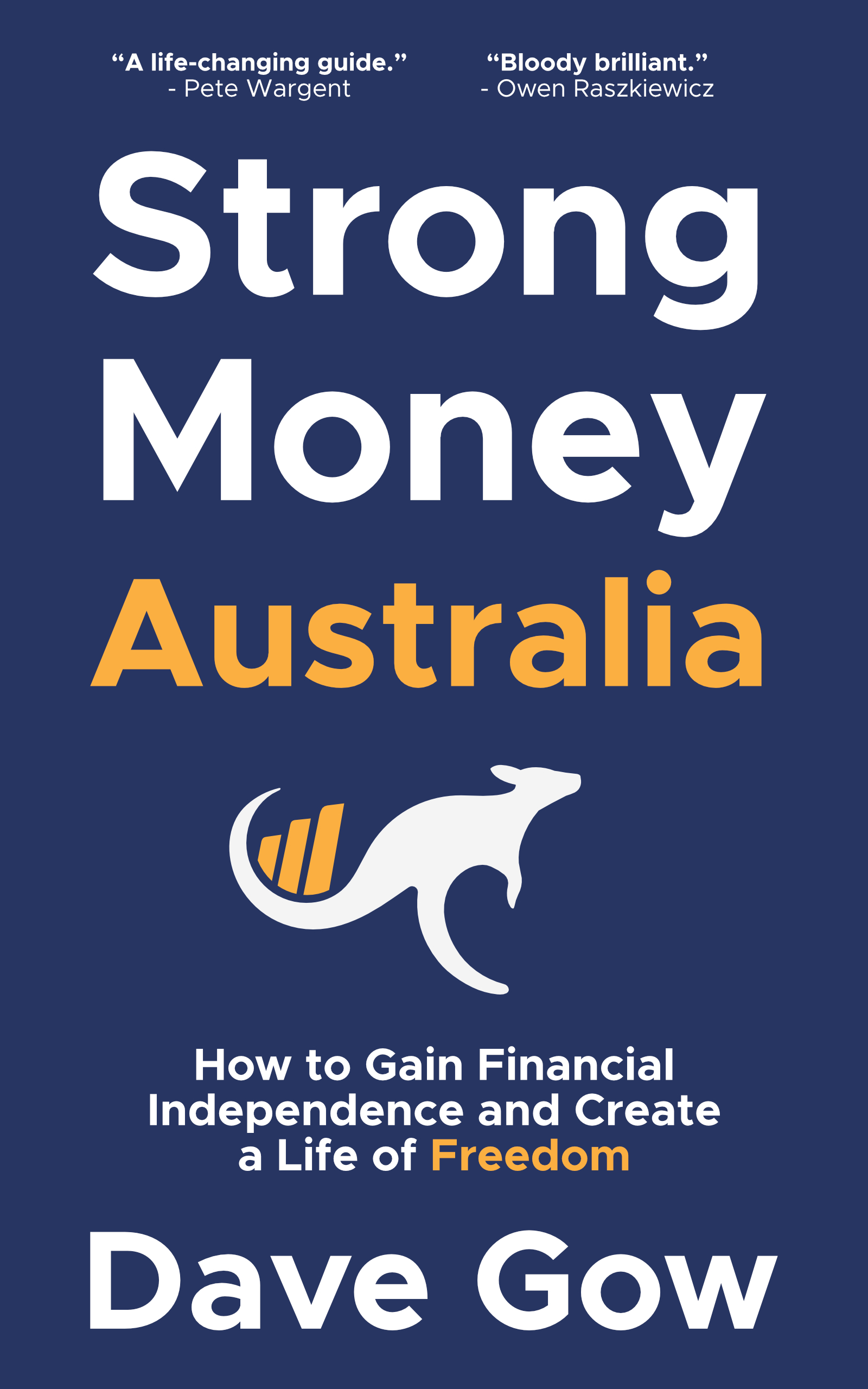We’re now well into the new financial year.
And most Australian companies have long since reported their results for the last 12 months. Of course, this includes the listed investment companies (LICs) we follow here at Strong Money.
I thought it made sense to cover the results of these LICs each year, and track the dividends paid. Since I’ve started doing this myself, I thought you guys might be interested too.
Not for excitement (ha!), simply to follow along! And to track the progress of dividends paid by Aussie companies over time.
Remember, these LICs can be thought of as a rough measure for corporate Australia, given they own a decent spread of our medium and large-sized businesses. Let’s get started…
The Market
If I have to see another market crash prediction or claim how it’s all going to end badly very soon, I think I’ll throw up.
Actually, no, I’ll probably just ignore it like I do the rest of them!
(read my post on this topic – What If Australia Crashes?)
For all the talk of the ups and downs, not much really happens in the sharemarket. And I mean that.
Taking a high level view, usually company earnings are up a bit, down a bit, or flat. Some businesses are doing great, while others languish. Get used to it, that’s just how it works.
But for us, the average is what matters. Whether company earnings are, on average, increasing. And whether dividends paid by those companies, on average, are increasing.
Let’s say you own a corner store in your neighbourhood. And you’re making a nice predictable amount of cashflow every week. You quietly go about your business and you’re happy with the income it generates.
Someone comes in and offers you $100k for the store. But you ignore them because you’re not interested in selling. Then next week they come in again and offer $90k for your store. Your income is unchanged. Would you worry that the offer for your store has dropped?
I hope not!
By watching market prices and worrying what you’re being offered (daily) for your companies, that’s exactly what you’re doing. When most of the time, the company is doing just fine and nothing has changed.
The only thing that changes much are the moods of the people playing the paper-money gambling game. This bullshit mentality of trading back and forth because of price movements is utter madness.
It’s about the businesses, not about the prices.
The Results
First, I’d like to note this is not to compare which LIC is better than the rest, so you can simply buy that one. It doesn’t work like that.
Each will have their turn in the sun, performing better than the others in certain years. On average, they will likely each do well over time.
And remember, it’s all about the long term income stream!
For all the headlines, ups and downs over the last 12 months, let’s have a look at how businesses did…
Australian Foundation Investment Company (AFIC)
Earnings per share increased by 10.8%. Dividend kept steady.
Argo Investments (ARG)
Earnings per share increased by 2%. Dividend increased by 1.6%.
Milton Corporation (MLT)
Earnings per share increased by 5.3%. Dividend increased by 1.6%.
BKI Investment Company (BKI)
Earnings per share increased by 2.5%. Dividend increased by 0.3%.
Australian United Investment Company (AUI)
Earnings per share increased by 6.4%. Dividend increased by 2.9%.
Summary
That’s it. Pretty boring huh?
And that’s the point. This style of investing isn’t very eventful. But it’s enjoyable… and profitable. Which ultimately, is what matters.
Overall, earnings increased by a moderate amount. And dividends were either stable or up a bit.
Why the difference in earnings between each LIC?
Well, this was a year where mining companies had very good conditions and their earnings soared. So they were able to massively increase the dividends paid to owners.
The LICs which had higher growth in earnings this year, were the ones which hold more resource companies. But keep in mind, it was only a couple of years ago that BHP cut its dividend by 75%, so mining companies aren’t exactly the most reliable income providers.
Anyway, these things go in cycles. And next year it may well be a different bunch of companies which have the strongest earnings.
The point is not to try and pick which sector or business is going to do the best next year. No. There’s already millions of punters trying to do that!
The point is to own a broad spread of companies, so whatever sectors are doing well, you’ll benefit regardless. And the easiest and most sensible way to do that is by owning an index fund, or (my preference) a couple of these LICs.
Outlook
Usually I’m not one for forecasts. But from what I’m reading, company earnings and dividends have continued to increase so far this financial year.
Clearly this bodes well for dividends over the next 12 months, so further increases seem likely.
As for where the market will go… who knows. And frankly, who cares. It’s just not worth thinking about.
Does your crystal ball work? No, mine doesn’t either!
At the end of the day, not a lot changes for dividend investors. That’s because we tend to think like business owners.
All that matters is how much cash our companies generate and how much they pass on to us as dividends. The rest is noise.
In fact, there’s a scale of excitement in the sharemarket and we’re right at the bottom of it.
Sharemarket Excitement Scale
Here’s how I see it…
— Traders and gamblers focus on speculative stocks which either go up like a rocket or crash through the floor. Excitement level 10/10.
— Investors who hold a group of individual shares or highly active funds, constantly assessing the moving value of their portfolio and hoping to outsmart the market. Excitement level 7/10.
— Investors which own broadly diversified funds like LICs and index funds, who watch the market regularly and focus mostly on capital growth. Excitement level 5/10.
— Investors who buy the same index funds, but focus only on the dividend income paid by the fund. Excitement level 2/10.
— Investors who buy diversified LICs with a long history of relatively stable and increasing dividends, and focus only on the dividends paid by those companies. Excitement level 1/10.
The higher up you go, the more volatile your ride will be. You might have more fun. And you might even make more money. Or you might not. But your chances aren’t good!
However, the lower levels are far more predictable and your results are more reliable. Personally, I’m much happier being lower on the excitement scale. Almost in a state of boredom!
Remember, our goal is to make money, not to be entertained. For us, that means investing for a growing stream of dividends from a diverse group of businesses.
Final Thoughts
Hopefully you’ve found this intentionally boring market roundup helpful! I’ll do this post once a year and we can follow the steady and inevitable progress together.
If you’re like me, your dividend income has increased relentlessly this year. Far more than the results above.
Not because we’re super-investors. Simply because we continually purchased more shares during the year. That’s why it’s important to devote more energy to saving, than you do to investing.
And always remember the principles of successful share investing:
Invest regularly, for the long term. Think like a business owner. Focus on the cash your companies generate. And ignore the market’s movements.
Happy investing!
On this topic, Peter Thornhill is holding another full-day presentation in Sydney, on the 24th November. You can find the details here. If you can’t make it or you’re in another state, you can always re-read my chat with Peter here.













It’s interesting that the earnings for a lot of these LICs increased a lot more than their own dividends did. Do you know what the payout ratios are normally like? Presumably the excess is just held in reserve in order to smooth dividend payouts for the bad years? I can see the benefits of this approach but personally would prefer that the cash be in my hands rather than that of the LIC.
It’s also quite interesting to see the variance in earnings increases between the different LICs, I would have expected them to be quite similar.
Companies try not to decrease dividends (as it is a negative signal to the market). So unless the future cash flows are very likely, a company wont increase it’s dividend.
Companies that are running an actual business don’t like to decrease their dividends, but LICs might have been different given they are to some extent at least similar to managed funds which do pass through what they receive. It doesn’t sound like they have been though, and whilst that obviously works fine for some people I’m less comfortable with it.
The payout ratios are usually between 90-100%. But in recent years, some have paid slightly over 100% because there were some large dividend cuts from the likes of Woolies/BHP etc and the LICs decided to keep paying the same level of income to shareholders. If they decided to payout less than they do, it would result likely result in a slightly higher dividend growth rate over time – makes sense when you think about it.
The excess is reinvested in the portfolio, it doesn’t just sit there in the bank. When there are dividend cuts, they can then use the (reserves) excess franking from previous years to continue paying the same fully franked dividends, even though they received less in income that year. So it simply means a smoother income stream, which most shareholders appreciate.
They’re similar over the long term which is the key thing, but from year to year, it depends on the dividends paid from their portfolio of course and to a lesser extent what they’ve been investing in recently.
LICs are certainly an interesting investment model and I appreciate you taking the time to explain how it all works.
As you say it smooths out the dividends that you get which I can see has it’s benefits and works well for lots of people, I’m still leaning towards ETFs instead though because that way I get the income and can then choose what to do with it whereas that isn’t the case with a LIC. It’s probably six of one and half a dozen of the other to some extent though, there’s more than one way to get to FIRE!
No worries at all:)
Sure thing, there’s no right answer for everyone!
I think a key factor is when someone has reached financial independence and is then living off dividends. That’s when reliable income becomes so important. You can imagine the delight with investors in AFIC, AUI and Whitefield having received no dividend cuts during the GFC, meanwhile an ETF investor saw their income cut drastically.
So next time around dividends may be cut 30-40% across the board, whereas LICs may only cut by 10-20% or perhaps not at all. The ETF investor would have to keep a lot more cash on hand to top up their income for times like that, and is a drag on portfolio returns. Personally I prefer the reliability of dividends because it takes away the vast majority of the income volatility.
Always best to tune out to all the finance news. Well probably all news in general would have a positive impact on your life. Why worry about things you can’t change? that goes for politics to share prices to house prices or what is happening in China.
Yep very well said Mr FMT! There’s a million things we can worry about, almost all of them will have no impact on our long term investing plans.
Another great article SMA. What are your thoughts on ARGO at the moment with their international diversification moving forward? As their performance since diversifying has been poor. And currently AFIC are also considering international diversification. Obviously their philosophy is about not selling and triggering CGT, so how they do this is still undecided. Do these moves concern you at all or do you still have faith in the board?
Also if Labour win the next election and remaking credits are removed will your investment strategy alter? As this will have a fair impact on your income as you are in retirement mode. Obviously if still working and paying tax then investing in the likes of AFIC is still effective?
Cheers
John
I’m not sure what you mean exactly. Are you looking at earnings growth, dividend growth or portfolio performance?
And are you talking about Argo’s infrastructure fund? That’s a very different thing to Argo the LIC. And are you talking about AFIC’s portfolio, or their suggesting that there may be an international LIC coming later?
Anyway, they both hold a number of companies with international operations – in fact AFIC’s recent report showed something like 43% of companies in the portfolio have overseas revenues. They have both been rejigging their portfolios because of the lower growth outlook for large companies, so the results will be seen over the next 10 years – not straight away, then we’ll know if it was a good move or not.
Investing in lower yield higher growth companies can be a drag on short term earnings growth, though should help long term earnings growth, as the portfolio slowly rotates away from higher yield companies like banks etc. Both companies are now underweight banks and better diversified than the index.
There’ll be no change to my strategy if franking refunds are removed. I’ll still be investing in broad Australian shares for a growing income stream – whether it’s LICs or an index it doesn’t matter that much. There is no better alternative in my view. Sure there’s REITs and other high yield stocks, but you wouldn’t want a portfolio comprised of just that! The bottom line is it will still be about a 4 to 4.5% tax free income stream for those on lower tax brackets, which will grow over time, and is reasonably well diversified. That’s good enough for me!
hmmm practising benign neglect Dave?
Interestingly a search on benign neglect takes me to Wikipedia reference
‘ Benign neglect is a policy proposed in 1969 by Daniel Patrick Moynihan, who was at the time on President Richard Nixon’s staff as an urban affairs adviser. While serving in this capacity, he sent the President a memo suggesting, “The time may have come when the issue of race could benefit from a period of ‘benign neglect.’ The subject has been too much talked about. The forum has been too much taken over to hysterics, paranoids, and boodlers on all sides. We need a period in which Negro progress continues and racial rhetoric fades.’
May be next topic you could write on behavioural economics:-)
Haha yep well spotted Gman 🙂
That’s an interesting story and I think it makes a lot of sense. Things tend to get played up too much in the finance world and the more we talk about issues the more worry and anxiety it creates – great for the media, terrible for a long term investment plan.
Nice post Dave. Just for clarification, if one’s income tax rate is above the 30 percent company tax rate, then the proposed Labor abolition of franking credits will not affect us in any way? So say your dividend income from MLT was 190k a year, then a Labor govt wouldn’t affect us?
The breakeven point is $95k of dividends plus franking credits per person, so it’d be $190k for a couple assuming the portfolio is held in joint names. Assuming a 4% dividend yield you’d need a portfolio of $2.375 mill for a single person or $4.75 mill for a couple, which would be a nice problem to have! I wrote a bit about it, and there’s a table at the bottom with the effects of us lesser types who aren’t aiming for $190k pa in retirement! https://aussiehifire.com/2018/09/09/how-would-the-proposed-changes-to-imputations-credits-affect-fire/
Thanks for the link. Very informative. This means anyone on HIFIRE need not be concerned about the change in government which is a relief.
How do you know this is what labor is planning on doing?
Because this is what they’ve said they are planning on doing? I mean who knows what they are actually planning on doing and we’re on about the fifth revision at this stage, but the numbers above are based on what they’ve said they are planning on doing.
Yes that’s correct 🙂
Fair comments Dave and I agree with you, its all about consistent and growing dividends…inconsistent share prices doesnt mean much to us dividend investors looking for income. Those mainstream LIC’s are doing their job and are maintenance free…too easy.
Just finished reading a book called ” Blueprint to wealth” by Gary Stone….he describes/proves how you can beat 88% of USA fund managers by steadily investing in ETF’s and holding them long term.
Knocking yourself out day trading/swing trading or buying the latest fad stocks isnt going to get the average punter anywhere but broke and losing sleep over the next trade. Wish I had a dollar for every ad that appears on youtube offering courses on how to beat the market with all sorts of charting software/techniques and how many suckers pay up good money to these con artist’s.
Passive investing focussing on dividends is the way to go to make money and reduce stress…..the more boring the better….
Thanks for the comment Mark.
The more boring the better, indeed 🙂
From memory I think Buffett said something like “there’s no extra points for effort in investing”.
Love the Sharemarket Excitement Scale!
I find it very hard to place myself on this though – technically I’m at your 7/10 level, with a focus on individual stocks and ‘value’ based investing. But I don’t like to ‘constantly’ monitor my portfolio value (even though I report on this monthly), and still have a heavy focus on the Fully Franked Dividends these individual stocks produce. Less predictable and stable than LICs for sure, but I prefer to select my own composition of dividend payers. I feel like a 5 – but speculators also probably tell themselves they’re only a 6 or 7…
My buddy /( arch nemesis) Indexing Ian however is boring as hell!
For a boring way of investing, and a ‘boring’ round-up post, you sure produce some great material and perspectives on investing. Keep up the boring work!
Cheers, Frankie
Thanks a lot Frankie!
You might find it difficult to use the scale, because it’s just some shit I made up! 🙂
Sounds to me like you’re somewhere in the middle of the range, but possibly towards the lower end to as you’re not really a speculator at all, since you focus more on fundamentals and dividends. And yeah I think the speculators buying marijuana stocks with no earnings feel like they’re well researched and making clever decisions – sadly, gambling in the finance world is somewhat easy to dress up and call it ‘investing’.
Haha gee thanks mate, glad you enjoyed it in a boring sort of way!
All deliciously boring – wonderful stuff. I sit mostly in the 1/10 excitement camp with a little bot 2/10 inside super.
Thanks for creating the LIC page, very helpful – it will soon be the Aussie equivalent to the Buffett letters 😉
Cheers Phil. Good to have you part of the slothful investors club lol. Glad you like the LIC page, though I think you’re pushing it a bit there mate!
The Slothful Investors Club…Ha! Now, that’s the Club I want to be in!!
Hi Dave
I picked up some ARG at 7.65 today which means a 4.1 percent dividend yield of 31.5cents per share. Would you consider buying more in the next few weeks when the price drops further or would you consider that as trying to catch a falling knife?
Nice work Jon!
Yes, actually I bought some Milton yesterday. And I’ve transferred some cash to buy a little more next week. The market may fall further for all I know, but I think the market looks attractive right now. Company earnings and dividends are doing just fine, regardless of what prices are doing. For us it simply means the income streams we’re buying have become cheaper.
I wouldn’t bother waiting for prices to get to a certain level – maybe they will, maybe they won’t. As always, just buy regularly over time and focus on the dividends 🙂
Interesting comments. Like the LIC chart.
I’m aiming to be about a 1.5 on the excitement scale. A good mix of LICs and ETFs with a focus on dividend income to help us semi-retire sooner rather than later.
Terrific way of explaining the excitement/boredom factor – thanks!